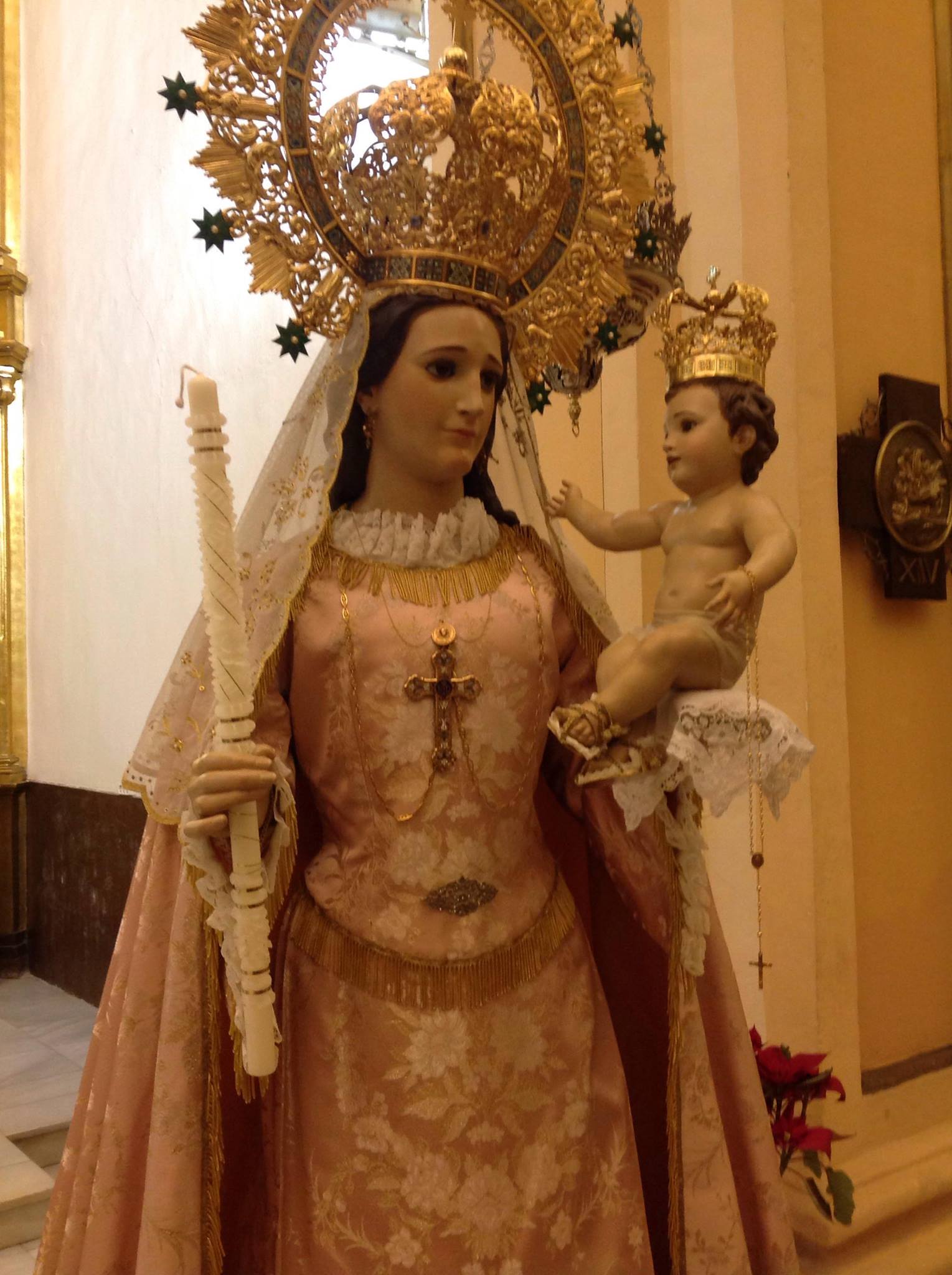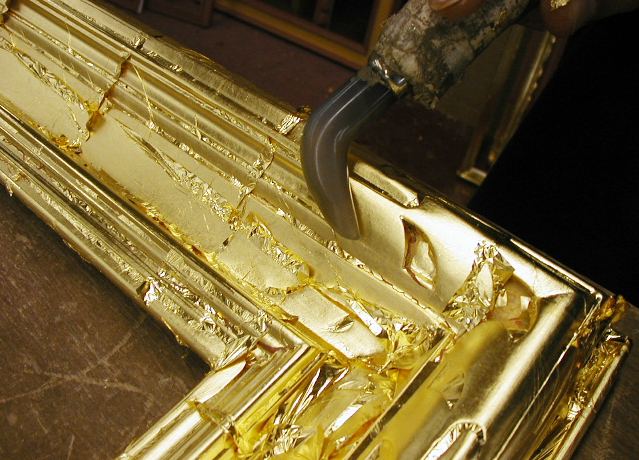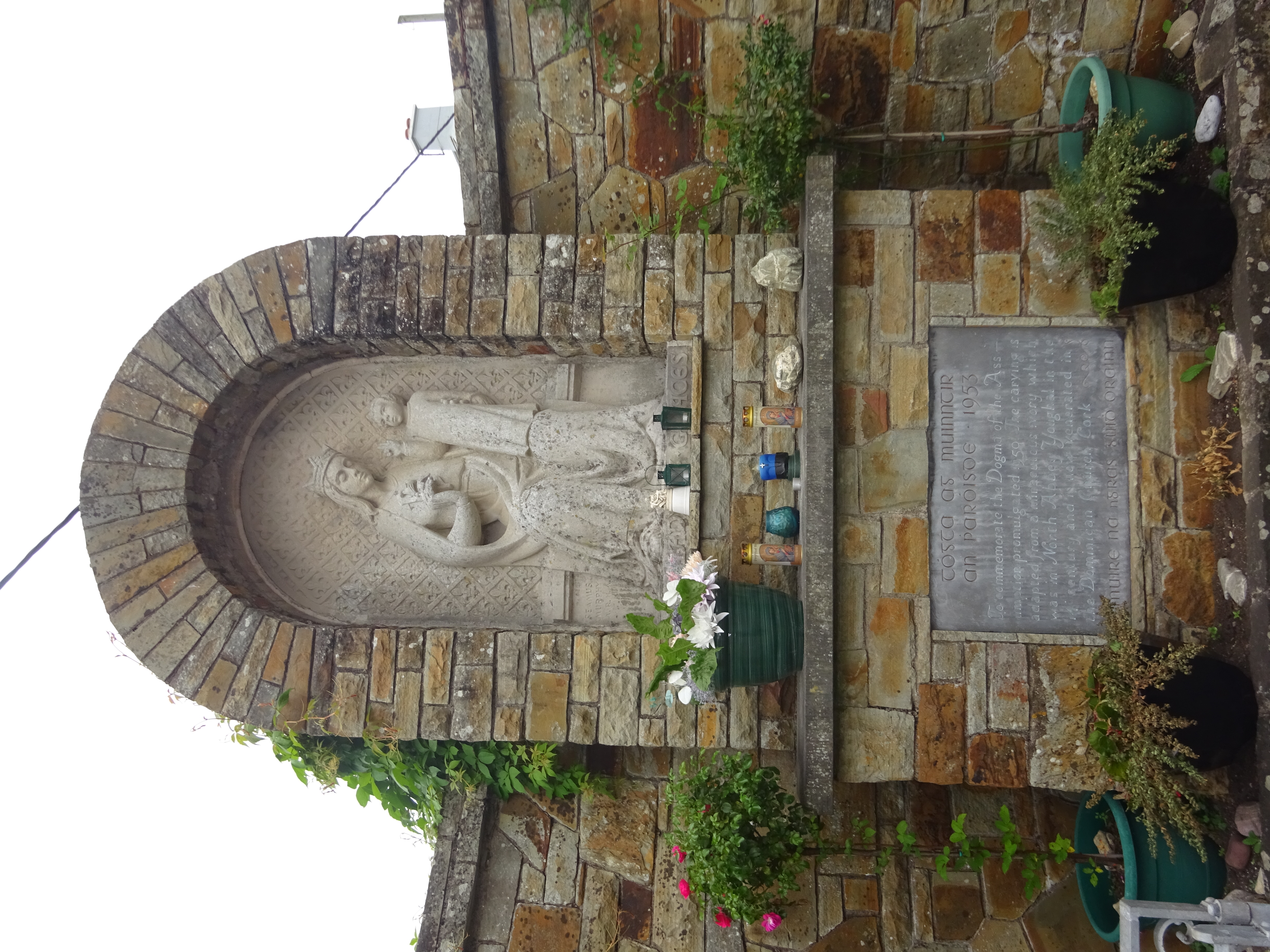|
Saint Margaret, Brugherio
The church of Saint Margaret ( it, Chiesetta di Santa Margherita) is a 16th-century chapel dedicated to Saint Margaret of Antioch. It is located in Cassina Baraggia, Brugherio, Italy. The church is adjacent to the Villa Brivio, to which it belonged. Description History The day after the pastoral visit of Charles Borromeo in Brugherio (to establish the church of Saint Bartholomew) in 1578, the archbishop visited the church of Saint Margaret in Baraggia, which was then attached to the house of Giovan Battista Bernareggi (now Villa Brivio). The church consisted of an arched chapel, a separated altar which did not follow canonical rules, and a round window on the front. It did not have a holy stone, bell nor vestments. The Mass was celebrated only on Saint Margaret's day. After 1594, the church's poor structural condition demanded that the celebration of Masses should be suspended. Giovan Battista Bernareggi's son pledged to restore the church and provide its furnishing. Th ... [...More Info...] [...Related Items...] OR: [Wikipedia] [Google] [Baidu] |
Brugherio
Brugherio (; in lmo, Brughee ) is a ''comune'' (municipality) in the Province of Monza and Brianza in the Italian region Lombardy, located about northeast of Milan. It was established December 9, 1866 unifying the suppressed municipalities of Baraggia, San Damiano and Moncucco (which nowadays are ''frazioni'' of Brugherio), together with the villages of Bindellera, Cesena, Gelosa, San Paolo, Torazza, Occhiate and Increa. Brugherio borders the following municipalities: Monza, Agrate Brianza, Carugate, Sesto San Giovanni, Cologno Monzese, Cernusco sul Naviglio. Brugherio received the title of city with a presidential decree on 27 January 1967. Etymology The name ''Brugherio'' is said to derive from ''Il Brugo'' which is Italian for ''Common Heather''. This plant is common on the clay-type soil in the region and it features on the town's coat-of-arms. [...More Info...] [...Related Items...] OR: [Wikipedia] [Google] [Baidu] |
Sacristy
A sacristy, also known as a vestry or preparation room, is a room in Christian churches for the keeping of vestments (such as the alb and chasuble) and other church furnishings, sacred vessels, and parish records. The sacristy is usually located inside the church, but in some cases it is an annex or separate building (as in some monasteries). In most older churches, a sacristy is near a side altar, or more usually behind or on a side of the main altar. In newer churches the sacristy is often in another location, such as near the entrances to the church. Some churches have more than one sacristy, each of which will have a specific function. Often additional sacristies are used for maintaining the church and its items, such as candles and other materials. Description The sacristy is also where the priest and attendants vest and prepare before the service. They will return there at the end of the service to remove their vestments and put away any of the vessels used duri ... [...More Info...] [...Related Items...] OR: [Wikipedia] [Google] [Baidu] |
Bell Tower
A bell tower is a tower that contains one or more bells, or that is designed to hold bells even if it has none. Such a tower commonly serves as part of a Christian church, and will contain church bells, but there are also many secular bell towers, often part of a municipal building, an educational establishment, or a tower built specifically to house a carillon. Church bell towers often incorporate clocks, and secular towers usually do, as a public service. The term campanile (, also , ), deriving from the Italian ''campanile'', which in turn derives from ''campana'', meaning "bell", is synonymous with ''bell tower''; though in English usage campanile tends to be used to refer to a free standing bell tower. A bell tower may also in some traditions be called a belfry, though this term may also refer specifically to the substructure that houses the bells and the ringers rather than the complete tower. The tallest free-standing bell tower in the world, high, is the Morteglia ... [...More Info...] [...Related Items...] OR: [Wikipedia] [Google] [Baidu] |
Cornice
In architecture, a cornice (from the Italian ''cornice'' meaning "ledge") is generally any horizontal decorative moulding that crowns a building or furniture element—for example, the cornice over a door or window, around the top edge of a pedestal, or along the top of an interior wall. A simple cornice may be formed just with a crown, as in crown moulding atop an interior wall or above kitchen cabinets or a bookcase. A projecting cornice on a building has the function of throwing rainwater free of its walls. In residential building practice, this function is handled by projecting gable ends, roof eaves and gutters. However, house eaves may also be called "cornices" if they are finished with decorative moulding. In this sense, while most cornices are also eaves (overhanging the sides of the building), not all eaves are usually considered cornices. Eaves are primarily functional and not necessarily decorative, while cornices have a decorative aspect. A building's project ... [...More Info...] [...Related Items...] OR: [Wikipedia] [Google] [Baidu] |
Gable
A gable is the generally triangular portion of a wall between the edges of intersecting roof pitches. The shape of the gable and how it is detailed depends on the structural system used, which reflects climate, material availability, and aesthetic concerns. The term gable wall or gable end more commonly refers to the entire wall, including the gable and the wall below it. Some types of roof do not have a gable (for example hip roofs do not). One common type of roof with gables, the gable roof, is named after its prominent gables. A parapet made of a series of curves ( Dutch gable) or horizontal steps ( crow-stepped gable) may hide the diagonal lines of the roof. Gable ends of more recent buildings are often treated in the same way as the Classic pediment form. But unlike Classical structures, which operate through trabeation, the gable ends of many buildings are actually bearing-wall structures. Gable style is also used in the design of fabric structures, with varying d ... [...More Info...] [...Related Items...] OR: [Wikipedia] [Google] [Baidu] |
Façade
A façade () (also written facade) is generally the front part or exterior of a building. It is a loan word from the French (), which means 'frontage' or ' face'. In architecture, the façade of a building is often the most important aspect from a design standpoint, as it sets the tone for the rest of the building. From the engineering perspective, the façade is also of great importance due to its impact on energy efficiency. For historical façades, many local zoning regulations or other laws greatly restrict or even forbid their alteration. Etymology The word is a loanword from the French , which in turn comes from the Italian , from meaning 'face', ultimately from post-classical Latin . The earliest usage recorded by the '' Oxford English Dictionary'' is 1656. Façades added to earlier buildings It was quite common in the Georgian period for existing houses in English towns to be given a fashionable new façade. For example, in the city of Bath, The Bunch of Grapes ... [...More Info...] [...Related Items...] OR: [Wikipedia] [Google] [Baidu] |
Our Lady Of The Rosary
Our Lady of the Rosary, also known as Our Lady of the Holy Rosary, is a Marian title. The Feast of Our Lady of the Rosary, formerly known as Feast of Our Lady of Victory and Feast of the Holy Rosary is celebrated on 7 October in the General Roman Calendar. 7 October is the anniversary of the decisive victory of the combined fleet of the Holy League of 1571 over the Ottoman navy at the Battle of Lepanto. Our Lady of the Rosary According to Dominican tradition, in 1206, Dominic de Guzmán was in Prouille, France, attempting to convert the Albigensians back to the Catholic faith. The young priest had little success until one day he received a vision of the Blessed Virgin, who gave him the rosary as a tool against heretics. While Mary's giving the rosary to Dominic is generally acknowledged as a legend, the development of this prayer form owes much to the followers of Saint Dominic, including the 15th-century priest and teacher, Alanus de Rupe. [...More Info...] [...Related Items...] OR: [Wikipedia] [Google] [Baidu] |
Gilding
Gilding is a decorative technique for applying a very thin coating of gold over solid surfaces such as metal (most common), wood, porcelain, or stone. A gilded object is also described as "gilt". Where metal is gilded, the metal below was traditionally silver in the West, to make silver-gilt (or ''vermeil'') objects, but gilt-bronze is commonly used in China, and also called ormolu if it is Western. Methods of gilding include hand application and gluing, typically of gold leaf, chemical gilding, and electroplating, the last also called gold plating. Parcel-gilt (partial gilt) objects are only gilded over part of their surfaces. This may mean that all of the inside, and none of the outside, of a chalice or similar vessel is gilded, or that patterns or images are made up by using a combination of gilt and ungilted areas. Gilding gives an object a gold appearance at a fraction of the cost of creating a solid gold object. In addition, a solid gold piece would often be too so ... [...More Info...] [...Related Items...] OR: [Wikipedia] [Google] [Baidu] |
Baroque
The Baroque (, ; ) is a style of architecture, music, dance, painting, sculpture, poetry, and other arts that flourished in Europe from the early 17th century until the 1750s. In the territories of the Spanish and Portuguese empires including the Iberian Peninsula it continued, together with new styles, until the first decade of the 19th century. It followed Renaissance art and Mannerism and preceded the Rococo (in the past often referred to as "late Baroque") and Neoclassical styles. It was encouraged by the Catholic Church as a means to counter the simplicity and austerity of Protestant architecture, art, and music, though Lutheran Baroque art developed in parts of Europe as well. The Baroque style used contrast, movement, exuberant detail, deep colour, grandeur, and surprise to achieve a sense of awe. The style began at the start of the 17th century in Rome, then spread rapidly to France, northern Italy, Spain, and Portugal, then to Austria, southern Germany, and Rus ... [...More Info...] [...Related Items...] OR: [Wikipedia] [Google] [Baidu] |
Niche (architecture)
A niche ( CanE, or ) in Classical architecture is an exedra or an apse that has been reduced in size, retaining the half-dome heading usual for an apse. Nero's Domus Aurea (AD 64–69) was the first semi-private dwelling that possessed rooms that were given richly varied floor plans, shaped with niches and exedrae; sheathed in dazzling polished white marble, such curved surfaces concentrated or dispersed the daylight. A is a very shallow niche, usually too shallow to contain statues, and may resemble a blind window (a window without openings) or sealed door. (Compare: blind arcade) The word derives from the Latin (), via the French . The Italian '' nicchio'' () may also be involved, OED, "Niche" as the traditional decoration for the top of a niche is a scallop shell, as in the illustration, hence also the alternative term of "conch" for a semi-dome, usually reserved for larger exedra. In Gothic architecture, a niche may be set within a tabernacle framing, like a richly ... [...More Info...] [...Related Items...] OR: [Wikipedia] [Google] [Baidu] |
Assumption Of Mary
The Assumption of Mary is one of the four Marian dogmas of the Catholic Church. Pope Pius XII defined it in 1950 in his apostolic constitution '' Munificentissimus Deus'' as follows: We proclaim and define it to be a dogma revealed by God that the immaculate Mother of God, Mary ever virgin, when the course of her earthly life was finished, was taken up body and soul into the glory of heaven. The declaration was built upon the 1854 dogma of the Immaculate Conception of Mary, which declared that Mary was conceived free from original sin, and both have their foundation in the concept of Mary as the Mother of God. It leaves open the question of whether Mary died or whether she was raised to eternal life without bodily death. The equivalent belief (but not held as dogma) in the Eastern Orthodox Church is the Dormition of the Mother of God or the "Falling Asleep of the Mother of God". The word 'assumption' derives from the Latin word ''assūmptiō'' meaning "taking u ... [...More Info...] [...Related Items...] OR: [Wikipedia] [Google] [Baidu] |
Fresco
Fresco (plural ''frescos'' or ''frescoes'') is a technique of mural painting executed upon freshly laid ("wet") lime plaster. Water is used as the vehicle for the dry-powder pigment to merge with the plaster, and with the setting of the plaster, the painting becomes an integral part of the wall. The word ''fresco'' ( it, affresco) is derived from the Italian adjective ''fresco'' meaning "fresh", and may thus be contrasted with fresco-secco or secco mural painting techniques, which are applied to dried plaster, to supplement painting in fresco. The fresco technique has been employed since antiquity and is closely associated with Italian Renaissance painting. The word ''fresco'' is commonly and inaccurately used in English to refer to any wall painting regardless of the plaster technology or binding medium. This, in part, contributes to a misconception that the most geographically and temporally common wall painting technology was the painting into wet lime plaster. Even in app ... [...More Info...] [...Related Items...] OR: [Wikipedia] [Google] [Baidu] |



.jpg)





.jpg)